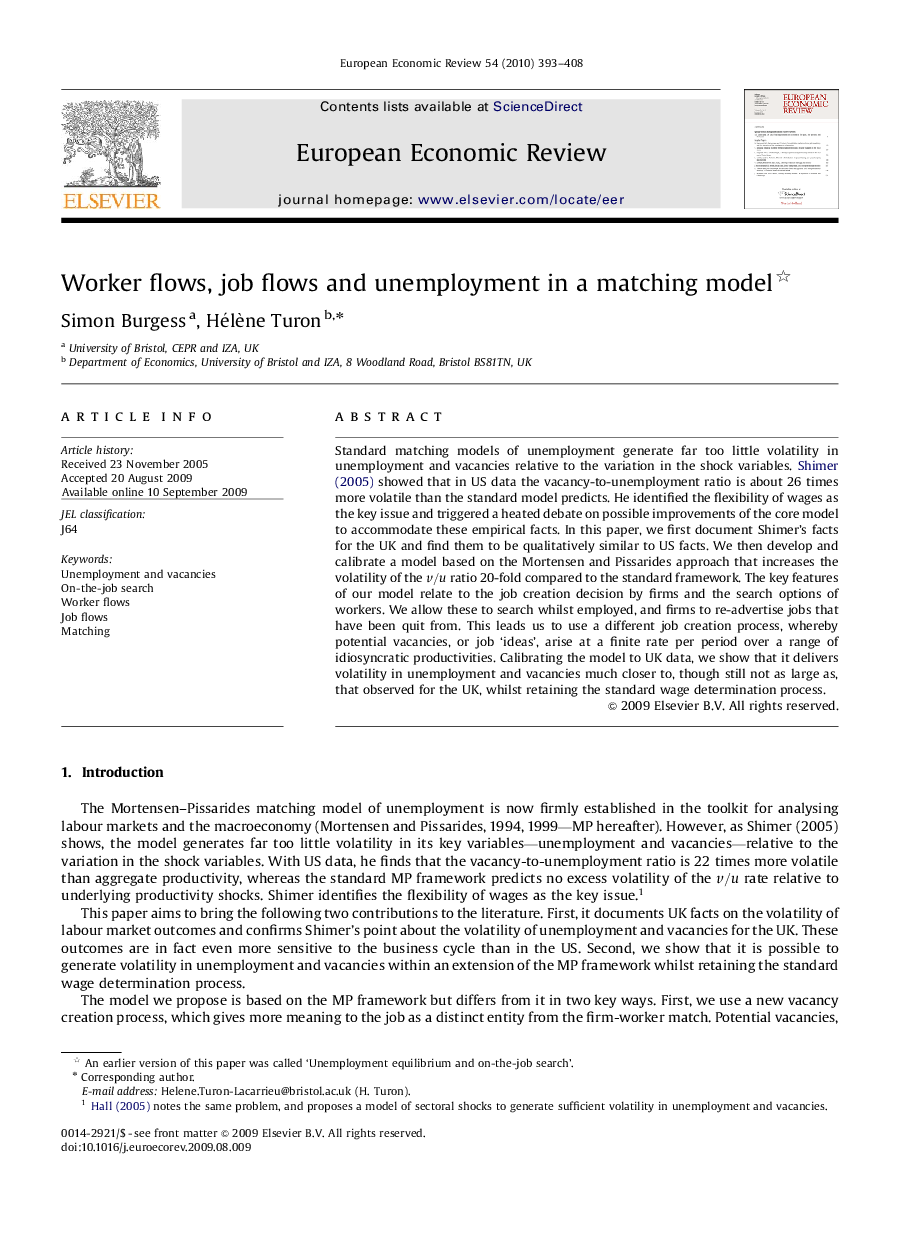| Article ID | Journal | Published Year | Pages | File Type |
|---|---|---|---|---|
| 5067243 | European Economic Review | 2010 | 16 Pages |
Standard matching models of unemployment generate far too little volatility in unemployment and vacancies relative to the variation in the shock variables. Shimer (2005) showed that in US data the vacancy-to-unemployment ratio is about 26 times more volatile than the standard model predicts. He identified the flexibility of wages as the key issue and triggered a heated debate on possible improvements of the core model to accommodate these empirical facts. In this paper, we first document Shimer's facts for the UK and find them to be qualitatively similar to US facts. We then develop and calibrate a model based on the Mortensen and Pissarides approach that increases the volatility of the v/u ratio 20-fold compared to the standard framework. The key features of our model relate to the job creation decision by firms and the search options of workers. We allow these to search whilst employed, and firms to re-advertise jobs that have been quit from. This leads us to use a different job creation process, whereby potential vacancies, or job 'ideas', arise at a finite rate per period over a range of idiosyncratic productivities. Calibrating the model to UK data, we show that it delivers volatility in unemployment and vacancies much closer to, though still not as large as, that observed for the UK, whilst retaining the standard wage determination process.
